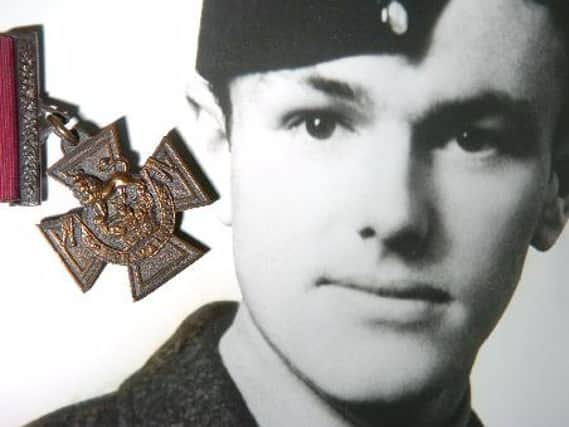The incredible story of Leeds' World War Two Victoria Cross hero


RAF flight sergeant Arthur Louis Aaron was just 21 when he died after being wounded on a bombing mission over Italy.
The son of a Russian Jewish immigrant, Arthur grew up in Gledhow and attended Roundhay School. When war broke out, he had begun studying architecture at the University of Leeds, and had joined the university's Air Training Corps squadron.
Advertisement
Hide AdAdvertisement
Hide AdBy 1940, he had given up his studies to join the RAF full-time, and was sent to Texas for pilot training before being assigned to fly Short Stirling heavy bombers from English airfields.
He regularly completed sorties over Nazi Germany, and after one raid was awarded the Distinguished Flying Medal for piloting his damaged Stirling back to base.
He was on his 20th and final mission when he and his crew were sent to bomb the Italian city of Turin in August 1943.
An enemy fighter fired at the plane, shattering the windscreen and damaging three engines. The navigator was killed and Arthur was seriously injured. Part of his face was shot off, his jaw was broken, one arm was immobile and he had shrapnel embedded in his lungs.
Advertisement
Hide AdAdvertisement
Hide AdThe young captain collapsed and the aircraft dropped several thousand feet before the flight engineer managed to regain control. Although he was unable to speak, Arthur managed to signal to the bomb aimer to take control of the plane, and was moved to the back of the aircraft to rest and be given morphine. The remaining crew set a course for the nearest Allied airfield, which was in Algeria.
However, Arthur insisted on returning to the cockpit and attempted to fly the plane again before his crew prevented him from doing so. He continued to write instructions with his left hand. and directed the bomb aimer to land the aircraft in darkness while close to collapse.
He died nine hours after the landing, of exhaustion. In his Victoria Cross citation, it was claimed that Arthur would likely had survived if he had conserved his strength by remaining in the back of the aircraft.
The Air Ministry said: 'In appalling conditions he showed the greatest qualities of courage, determination and leadership and, though wounded and dying, he set an example of devotion to duty which has seldom been equalled and never surpassed.'
Advertisement
Hide AdAdvertisement
Hide AdHeartbreakingly, it was later revealed that the Stirling could have actually been damaged by friendly fire from another bomber on the sortie.
Arthur's bravery is commemorated by a memorial at Roundhay School, and also at the Jewish Military Museum in London - he was one of just three British Jewish servicemen to be awarded the VC during the war.
In 2000, he was chosen by public vote to be the subject of a new statue in Leeds, and it was erected at Eastgate roundabout. His medals were donated to Leeds City Museum by his parents.